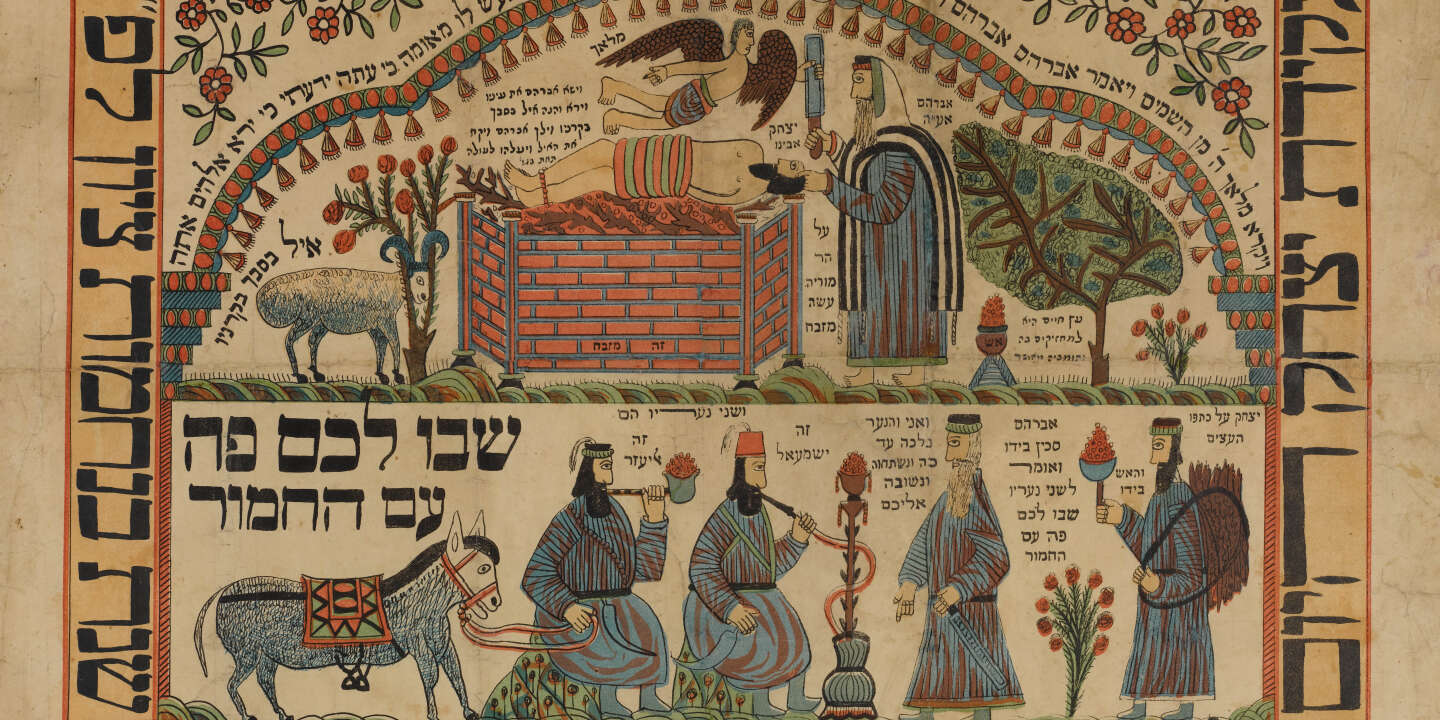Two hundred and eighty works from all over the world were brought together at the Institut du monde arabe (IMA) in Paris for the exhibition “Jews from the East, a multi-thousand-year history”. They tell of the twenty-six centuries of exile of the Judaic communities of the Near East, from Judea to the banks of the Euphrates, from ancient Mesopotamia (Syria-Iraq) to the hilltop villages of Yemen in Arabia, to the highlands. Atlas plateaus in Morocco. “A great first on an international scale which sheds light on Jewish history in the East”, says Benjamin Stora, general curator of the exhibition, himself of Jewish faith, originally from Constantine, Algeria.
To tell such a long story, you have to go back to the origin, over centuries, according to Benjamin Stora. “We cannot reduce this story to the Israeli-Palestinian conflict. Jews and Arabs were not foreigners but from the same world. From Africa to Asia has been woven a culture of the sacred text, a magnificent calligraphy, from Hebrew to Arabic. The Jews of the Maghreb and the Mashreq [l’Orient arabe] live like Orientals. The prayers of the mosques had the same sound as those of the synagogues ”, he assures, recalling his childhood memories.
Benjamin Stora, historian: “We cannot reduce this story to the Israeli-Palestinian conflict. Jews and Arabs were not foreigners but from the same world ”
The great intellectual Abdelwahab Meddeb, who died in 2014, speaks of « coexists » : “It is a marriage of harmony and conviviality shared between several monotheistic worlds”, says Benjamin Stora. This is evidenced by the poster of the exhibition which represents the mural of the IIIe century of the synagogue of Dura Europos, on the Euphrates, in northeastern Syria, in which it appears that the toga is the ritual costume of the time, both Jews and Christians. Throughout the exhibition, this oriental “conviviality” is expressed through liturgical and archaeological pieces and everyday objects – jewelry, costumes, manuscripts, photos, period films, music. On loan from forty museums and private collectors from nine countries, these pieces mark the historical journey of the Jewish epic in its chronology, that of Judaism anchored in the land of Islam.
The exile of the Jews begins in 587 before our era, date of the destruction of the first temple of Solomon in Jerusalem. The Jewish communities are then deported to Babylon, where they find the original nomadic way of life and the caravan trade. In 320 before our era, the Torah was translated into Greek, intended for the Jewish populations of Alexandria deported by Ptolemy Soter like those of Cyrenaica and Carthage, in Tunisia. The ancestral presence of the oldest of the Jewish diasporas in Iran is accompanied by the translation of the Hebrew Bible into Judeo-Persian. Archaeological traces of the synagogues of the IIIe century BC AD, testifying to a religious and community life, are attested in Alexandria, in the Nile delta, in Fustat (Old Cairo), as in Babylon, Aleppo, Baghdad, Kairouan, Carthage, Volubilis, Toledo, Cordoba, Granada and Constantinople.
You have 55.32% of this article to read. The rest is for subscribers only.
–


